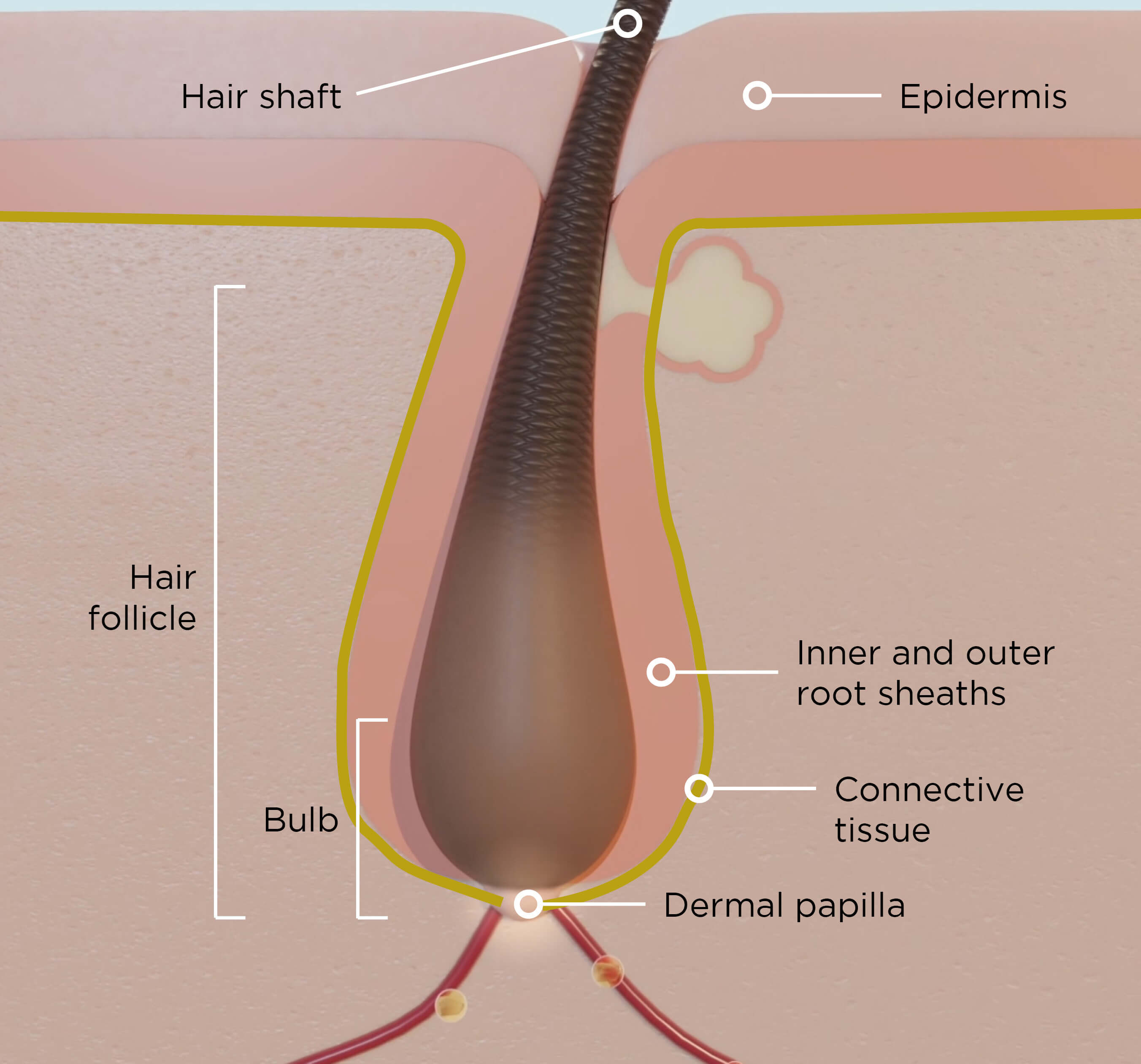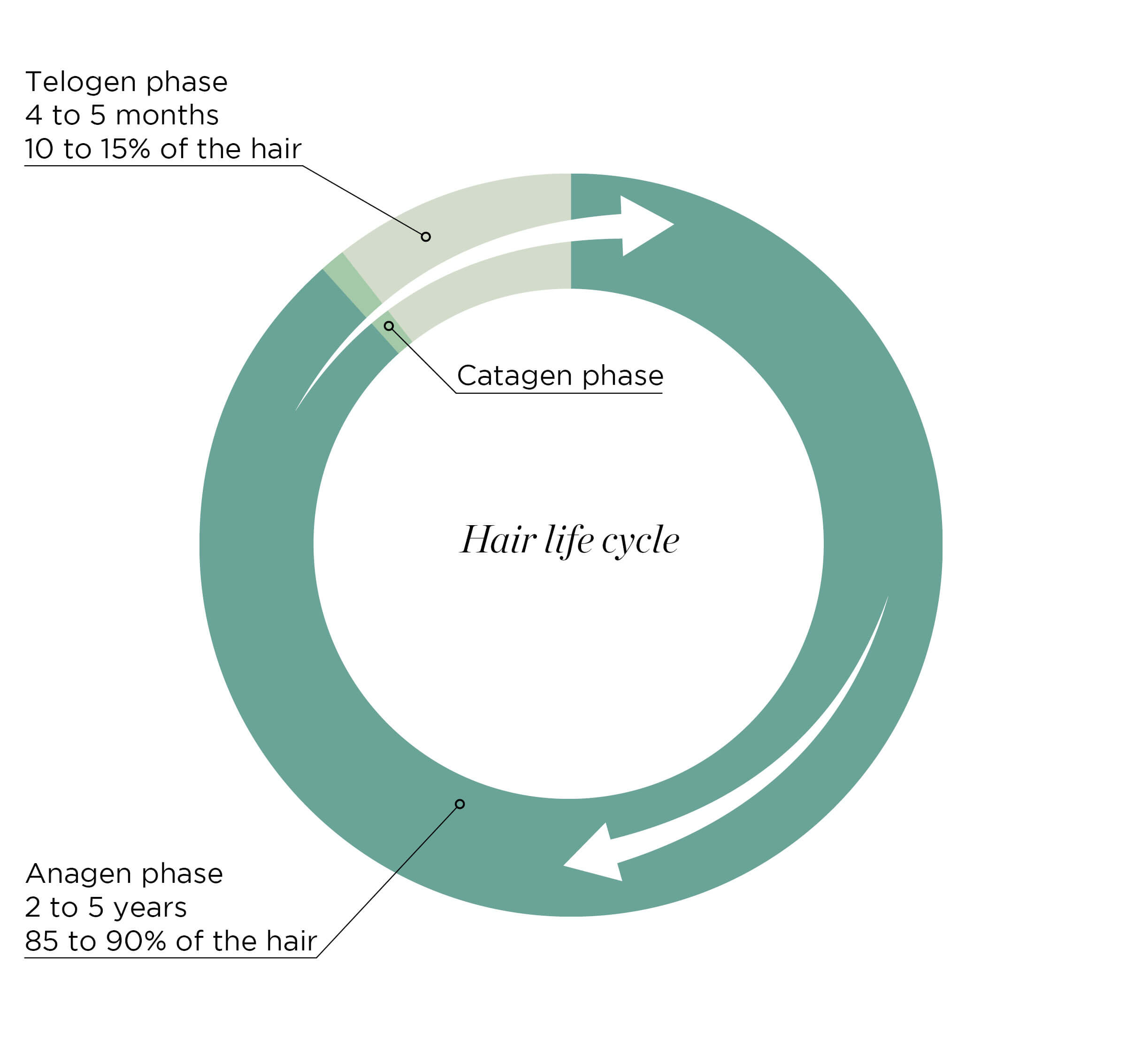The hair

Hair, a strong symbol of seduction
In all civilisations, hair has always played an important role from a social and political point of view.
It conveys strength, beauty and seduction, perhaps even more for women than for men.
In ancient Greece, young women cut their long hair when they married.
In the Middle Ages in France, the rank of nobility was distinguished according to hair length: the longer it was, the more important the character was.
In Africa, long hair for women is a sign of strength, health and fertility.
In India, long and thick hair for women represents feminine beauty, a symbol of strength and pure elegance.
Hairstyles and colours have never been so varied as today. Hair has become a means of self-assertion and expression, reinforced by the use of social networks and the “instagramability” of consumers’ aesthetic choices.
This means having healthy, strong and shiny hair is a basic need, especially for women.
What is hair ?
Hair anatomy
Hair is part of the family of integuments that includes body hair, nails and hair. The visible part is mostly composed of keratin.
Hair consists of the hair shaft, the outer visible part, and the bulb located under the scalp, 3 or 4 mm from the surface. At the base of the bulb is the dermal papilla, the biological motor of hair.
The hair follicle, more commonly known as the “hair root”, is composed of the bulb and epithelial sheaths.
Around the hair shaft is the internal epithelial sheath, which plays an important role in hair growth and the outer epithelial sheath, a stem cell pool involved in the hair cycle.
In the bulb, the division of the keratinocytes is intense and is the source of the hair shaft and epithelial sheaths.
The dermal papilla allows oxygenation and irrigation of the bulb. It consists of fibroblasts that produce the extracellular matrix. Highly vascularized, it ensures the nutrition of the bulb and regulates its biological functions.
The connective tissue produced by fibroblasts is predominantly collagen. It plays an important role in anchoring hair.


The hair life cycle
The hair life cycle is composed of three phases, anagen, catagen and telogen, and it is renewed dozens of times during a lifetime. Each hair evolves individually and asynchronously.
Reactional or occasional hair loss called “telogen effluvium” is caused by an imbalance of the hair cycle.
1. Anagen phase
This is the growth phase that starts in the dermal papilla at the base of the bulb. Cell division is intense and allows the formation of the hair follicle, and internal and external epithelial sheaths.
The hair shaft is then keratinized. Simultaneously, the hair follicle develops in the deep layers of the skin to ensure the hair’s nutrient supply.
This is the longest period of the hair life cycle, lasting from 2 to 5 years.
2. Catagen phase
This is a resting phase. Hair stops growing. This phase lasts about 3 weeks.
3. Telogen phase
During this phase, hair no longer grows, but remains anchored in the hair follicle.
At the end of the telogen phase, hair falls out to give way to a new hair follicle in the anagen phase. This is the beginning of a new hair cycle.
Hair loss in women
In search of a natural solution...
Hair loss is a common problem, and a source of stress and aesthetic discomfort.
Today, hair loss affects 50% of women in their lifetime1, impacting their self esteem and quality of life.
Hair loss is related to stress, pollution, overuse of aggressive hair products or nutritional imbalance. Telogen effluvium is one of the most common types of diffuse, non-hormonal-dependent hair loss seen in women.
Dietary supplements mainly offer vitamins and minerals, but often hair needs more!
Keranat™ is a unique, innovative and effective solution for women looking for a natural solution to fight against excessive hair loss and desiring healthy hair.
